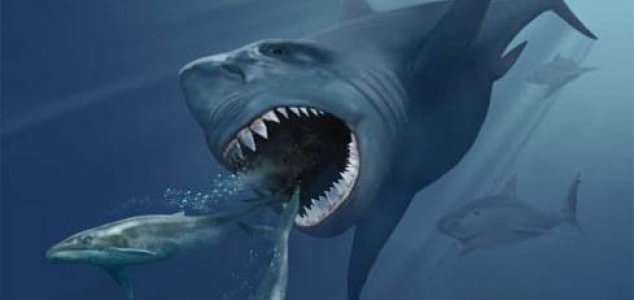Palaeontology
September 3, 2020 · 8 comments
8 comments

Megalodon puts the shark from 'Jaws' to shame. Image Credit: CC BY 3.0 Karen Carr
For 20 million years this gargantuan predator dominated the world's oceans, but then something happened that had such a catastrophic effect on the species that it ended up going extinct.
Now a new study by scientists in the UK has revealed for the first time just how large Megalodon actually was - building upon previous estimates of the length of its body.
A Megalodon measuring 16 meters in length, it is now believed, would have a head measuring 4.65 meters long, a dorsal fin 1.62 meters tall and a tail 3.85 meters long.
Such an extreme size cements its place as one of the largest predators to have ever lived.
"Megalodon was actually the very animal that inspired me to pursue palaeontology in the first place at just six years old, so I was over the moon to get a chance to study it," said researcher Jack Cooper.
"This was my dream project. But to study the whole animal is difficult considering that all we really have are lots of isolated teeth."
Source: The Guardian | Comments (8)
True scale of the Megalodon shark revealed
By T.K. RandallSeptember 3, 2020 ·
 8 comments
8 comments
Megalodon puts the shark from 'Jaws' to shame. Image Credit: CC BY 3.0 Karen Carr
This gargantuan prehistoric shark was so large that a human standing on its back would be the size of its fin.
Measuring up to 18 meters in length, this prehistoric behemoth, which lived up until around 2.6 million years ago, made the great white shark - which is less than a third of its size - look like a minnow.For 20 million years this gargantuan predator dominated the world's oceans, but then something happened that had such a catastrophic effect on the species that it ended up going extinct.
Now a new study by scientists in the UK has revealed for the first time just how large Megalodon actually was - building upon previous estimates of the length of its body.
Such an extreme size cements its place as one of the largest predators to have ever lived.
"Megalodon was actually the very animal that inspired me to pursue palaeontology in the first place at just six years old, so I was over the moon to get a chance to study it," said researcher Jack Cooper.
"This was my dream project. But to study the whole animal is difficult considering that all we really have are lots of isolated teeth."
Source: The Guardian | Comments (8)

The Unexplained Mysteries
Book of Weird News
AVAILABLE NOW
Take a walk on the weird side with this compilation of some of the weirdest stories ever to grace the pages of a newspaper.
Click here to learn more

Support us on Patreon
BONUS CONTENTFor less than the cost of a cup of coffee, you can gain access to a wide range of exclusive perks including our popular 'Lost Ghost Stories' series.
Click here to learn more
Modern Mysteries, New Age and Prophecies
Palaeontology, Archaeology and History
Israel, Palestine and the Middle-East
United States and the Americas
Total Posts: 7,768,009 Topics: 325,014 Members: 203,758
Not a member yet ? Click here to join - registration is free and only takes a moment!
Not a member yet ? Click here to join - registration is free and only takes a moment!
































Please Login or Register to post a comment.